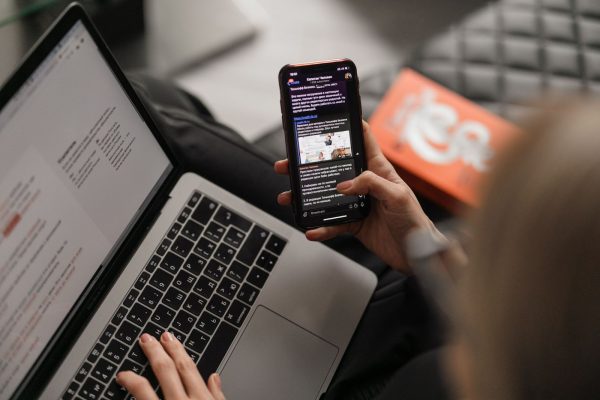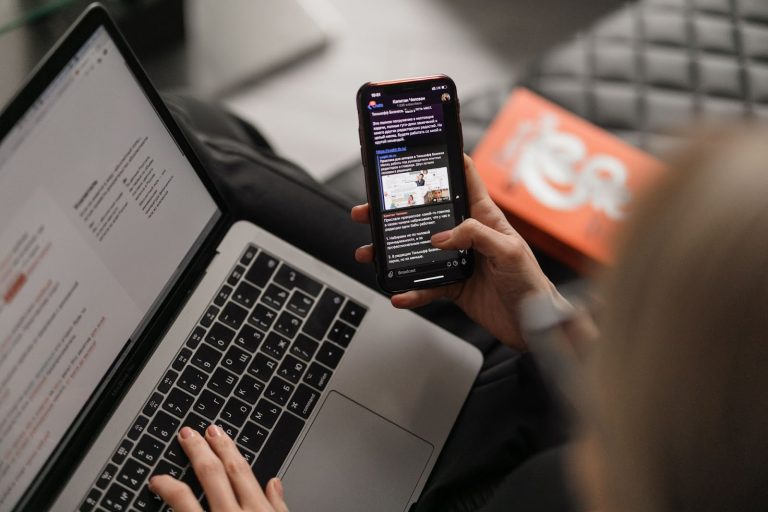Mobile optimization is becoming increasingly important for businesses as more and more people access the internet from their mobile devices. In fact, mobile devices now account for more than half of all internet traffic worldwide. As a result, it’s essential for businesses to ensure that their websites and apps are optimized for mobile devices in order to provide a seamless user experience and avoid losing potential customers. In this article, we’ll cover 14 mobile optimizations and best practices you need to know in order to ensure that your website or app is mobile-friendly.

Responsive design
Responsive design is the practice of designing websites that can adapt to different screen sizes and resolutions. This is crucial for mobile optimization because it ensures that your website will look and function properly on a range of devices, including smartphones and tablets. A responsive website is also preferred by search engines like Google, which prioritize mobile-friendly sites in search results.
Mobile-first design
Mobile-first design is an approach to web design that prioritizes the needs of mobile users. This means designing your website or app for mobile devices first and then expanding it to desktop and laptop screens. This approach ensures that your website or app will be optimized for the small screens and limited functionality of mobile devices, and will provide a better user experience overall.
Simple and easy-to-use navigation
Mobile users have limited screen space, so it’s essential to provide simple and easy-to-use navigation on your website or app. This means using clear and concise labels for your navigation links and avoiding long dropdown menus that are difficult to use on small screens. A good rule of thumb is to limit your navigation menu to five or six links.
Optimized images
Images can significantly impact the loading speed of your website or app, especially on mobile devices with slower internet connections. To optimize your images for mobile, use compressed image formats like JPEG or PNG, and reduce the image size by cropping and resizing. You can also use lazy loading, which only loads images when they are needed, to reduce the load time of your website or app.
Compressed files
In addition to images, other files like CSS and JavaScript can also impact the loading speed of your website or app. To optimize these files, compress them using tools like Gzip or Brotli, which can significantly reduce the file size without affecting the functionality of your website or app.
Fast loading speed
Mobile users are notoriously impatient, and will quickly leave a website or app if it takes too long to load. To ensure fast loading speed, minimize the number of HTTP requests your website or app makes, and optimize your code for efficiency. You can also use a content delivery network (CDN) to distribute your content to servers closer to your users, reducing the load time of your website or app.
Clear and concise content
Mobile users have limited attention spans, so it’s important to provide clear and concise content on your website or app. This means using short paragraphs, bullet points, and headings to break up your content into digestible chunks. You should also avoid using too much text or images, as this can make your website or app overwhelming and difficult to navigate.
Mobile-friendly forms
Forms are an essential part of many websites and apps, but they can be difficult to use on mobile devices. To make your forms mobile-friendly, use large and clear input fields, and avoid using dropdown menus or checkboxes that are difficult to use on small screens. You should also minimize the number of fields in your form, as this can make it easier for users to complete.
Clickable buttons
Clickable buttons are essential for mobile optimization, as they provide a clear and easy-to-use interface for users. To make your buttons clickable, use a large and clear font, and ensure that they are spaced out properly on the screen. You should also use contrasting colors for your buttons to make them stand out on the screen. Avoid using too many buttons on one page, as this can make the user experience confusing and overwhelming.
Touch-friendly interface
Mobile devices rely on touchscreens for navigation, so it’s essential to create a touch-friendly interface for your website or app. This means using large and clear buttons, and ensuring that users can easily scroll and swipe through your content. You should also avoid using hover effects, as they do not work on touchscreens.
Mobile-friendly search
Search is an important feature for many websites and apps, but it can be difficult to use on mobile devices. To make your search mobile-friendly, use a large and clear search box, and ensure that it is easily accessible on the screen. You should also provide suggestions as the user types, and use filters to help users narrow down their search results.

Voice search
Voice search is becoming increasingly popular among mobile users, so it’s important to optimize your website or app for voice search. This means using natural language and conversational keywords in your content, and ensuring that your website or app is compatible with voice assistants like Siri and Google Assistant.
Localization
Localization is the process of adapting your website or app for different languages and cultures. This is important for mobile optimization because it ensures that your website or app is accessible to users around the world. To localize your website or app, use a language selector, and provide translations for your content and navigation links.
Testing and optimization
Finally, it’s important to regularly test and optimize your website or app for mobile devices. This means using tools like Google’s Mobile-Friendly Test and PageSpeed Insights to analyze the performance of your website or app and make changes to improve its speed and functionality. You should also solicit feedback from users, and use analytics tools to track user behavior and identify areas for improvement.
Conclusion
Mobile optimization is essential for businesses that want to provide a seamless user experience and attract more customers. By following these 14 mobile optimizations best practices, you can ensure that your website or app is mobile-friendly and optimized for a range of devices and users. Remember to prioritize the needs of mobile users, and test and optimize your website or app regularly to ensure its performance and functionality.
If you are looking for expert help to optimize your website for mobile devices, improve your SEO, manage your social media accounts, or boost your digital marketing efforts, WebsiteMD can help. Our team of experienced professionals can provide you with customized solutions to meet your specific needs and goals. Contact us today to learn more about how we can help you take your online presence to the next level.

